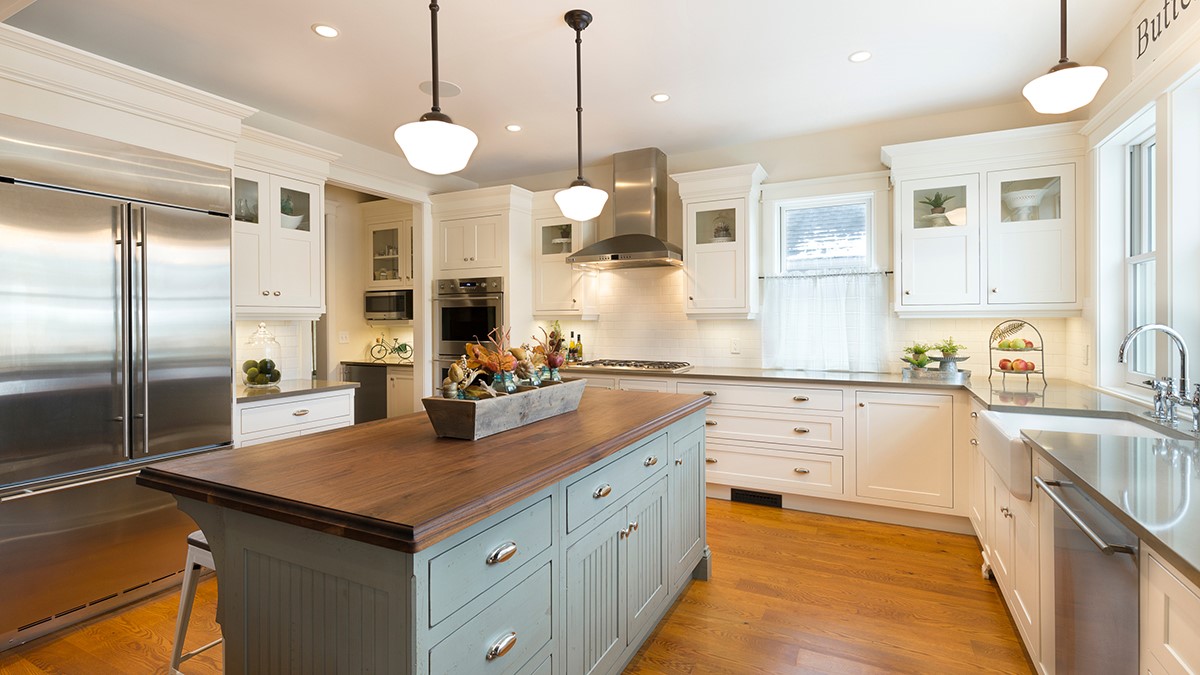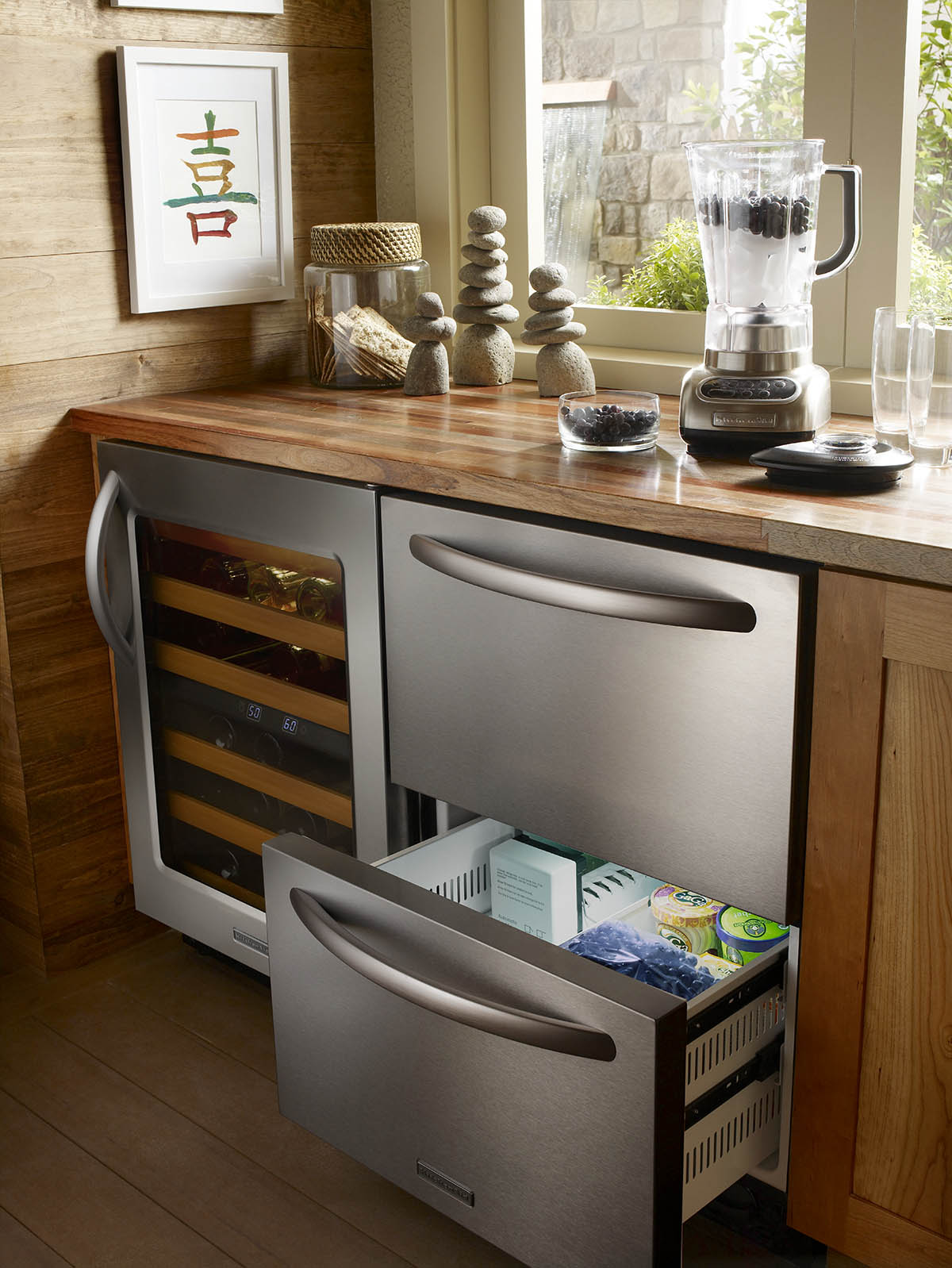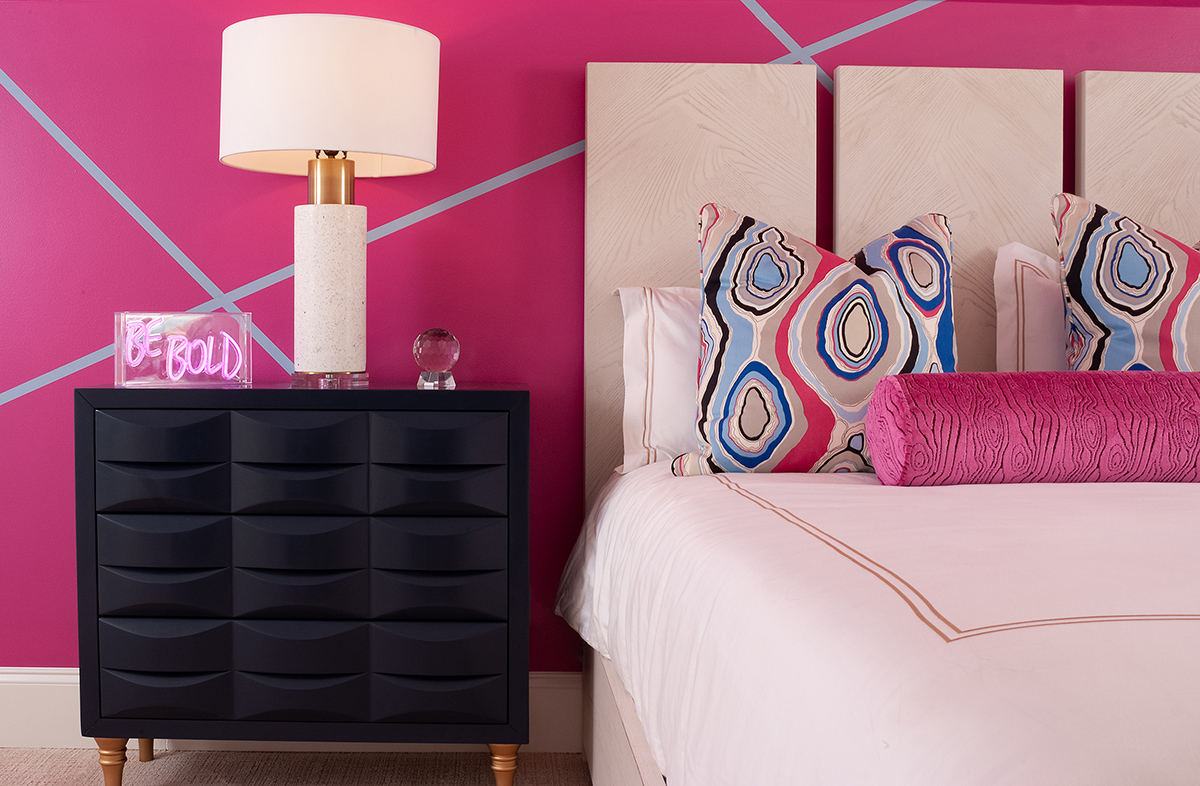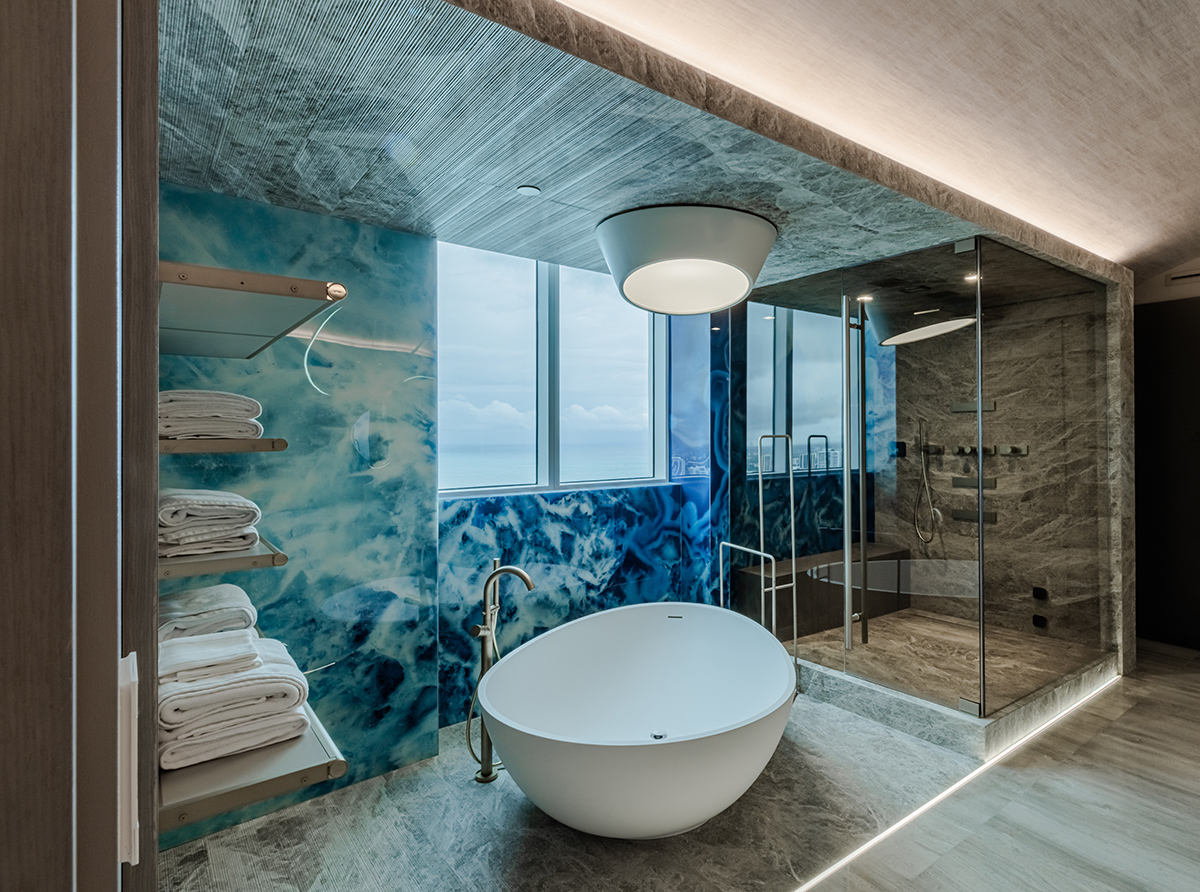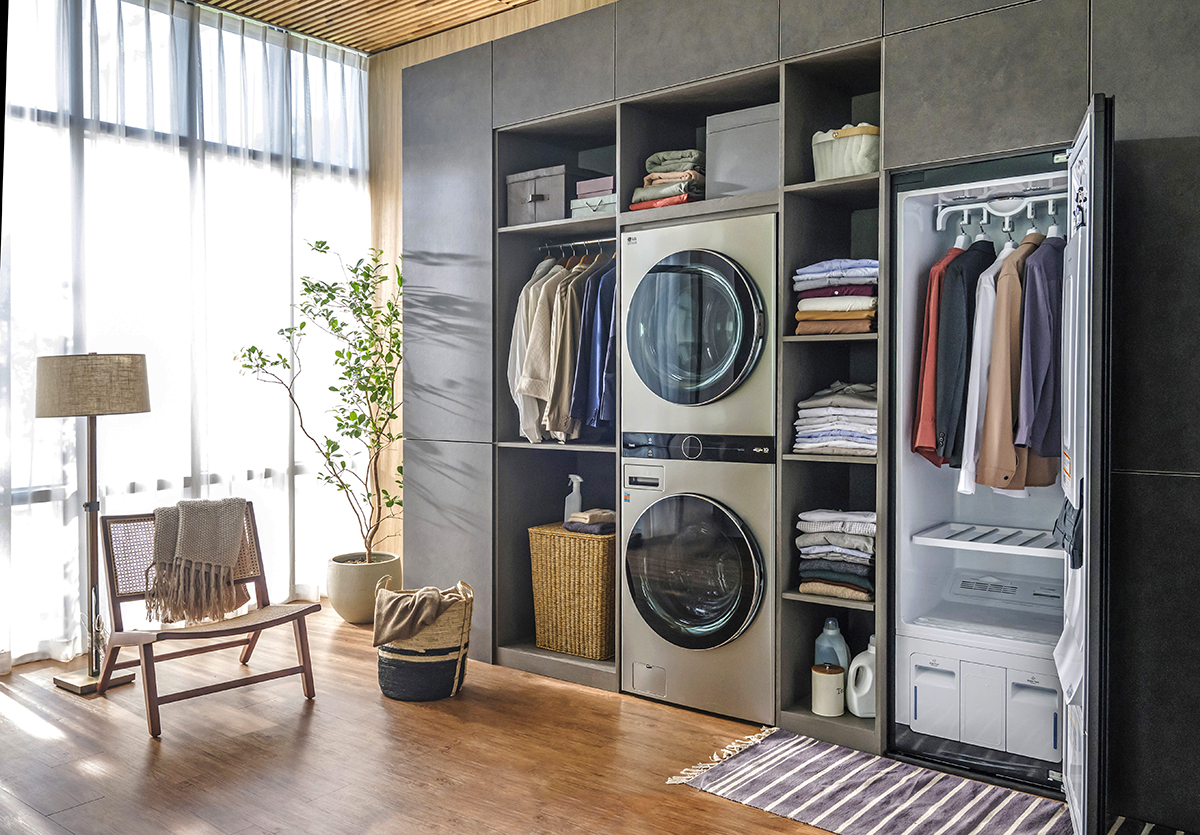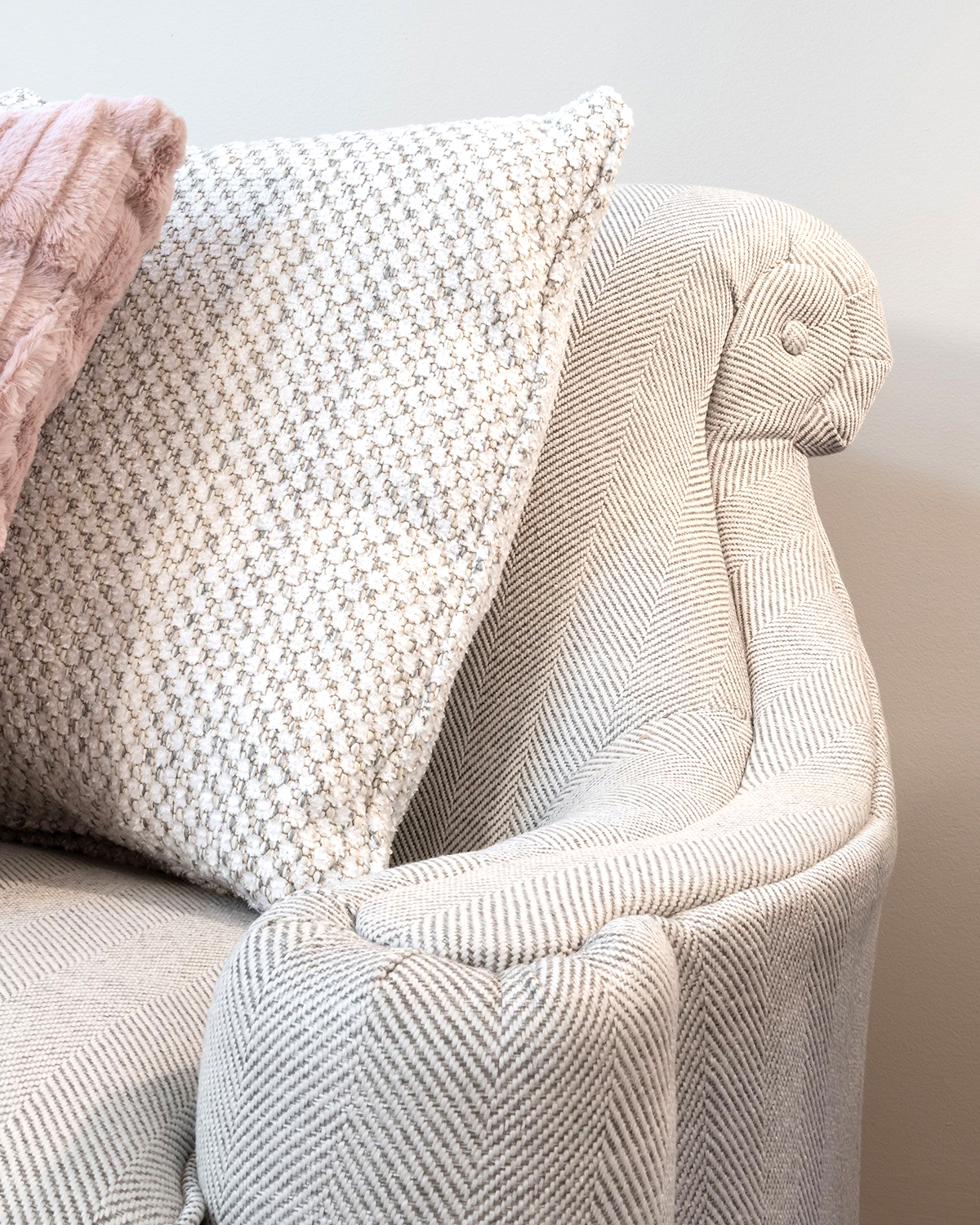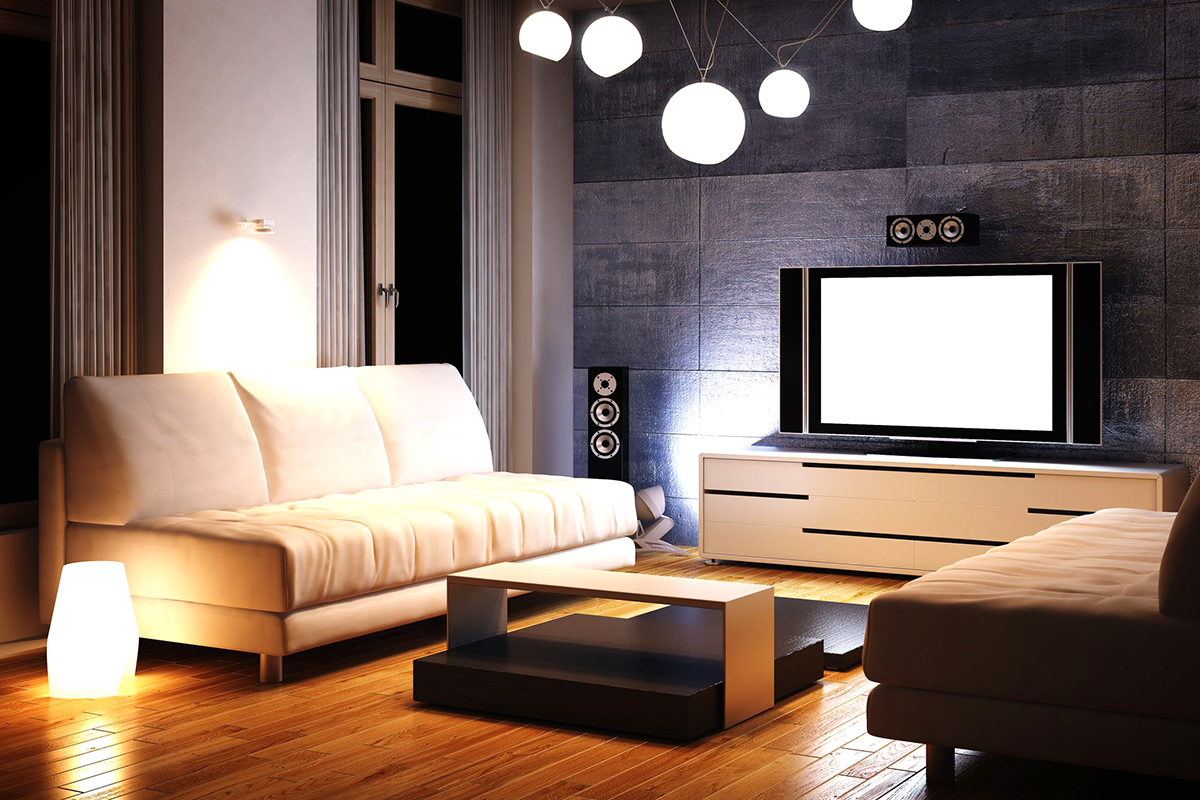WRITER | LIZ JERORE
PHOTO | @HOME CABINETRY + INTERIORS
Do you have a tired laminate or tiled kitchen countertop? Why not freshen up with the latest rebirth of butcher block! This trending design element is the perfect affordable surface to bring interest and warmth to a kitchen or craft room.
If you’ve decided that butcher block is for you, there are a few tips to help make the most of your choice.
Where Do I Find It?
Big box stores often stock unfinished birch butcher block slabs in many sizes, including wider island slabs. It is super easy to cut and fit with basic tools such as a circular or table saw.
How Do I Treat It?
The great thing is that you can use your butcher block counter to chop vegetables or simply treat as you would your dining room table. The surface is easy to maintain with the proper finish.
Finishing the countertop surface is a breeze because these counters are sold pre-sanded. Various finishes are available, such as the penetrating food-safe gel called EZ-DO. Fine sanding between several coats will give you a soft glass-like finish and bring out your butcher block’s interesting character. You may also use mineral oil or beeswax, but this option will require upkeep as counters will dry out.
Uh-Oh, I Have Kids!
Scratches are a simple fix: simply wipe a little EZ-DO, let dry, and buff out with a white cloth, per instructions. Super easy!
I Am Not “Cottagey”
While natural birch or maple are great wood counter choices for a beachy cottage vibe, you may desire something different. Why not look to walnut, cherry, or white oak, to name a few? Many edge shapes, thicknesses, and finishes are available. Customized tops are more expensive but offer a limitless range of design options to create a unique statement for your home.
You may want to consider mixing countertop materials in your kitchen. Use quartz or stone near the kitchen sink and butcher block on the island. It is a perfect surface to dust with flour and roll out pie crusts.
Can It Go Anywhere?
Don’t be afraid to use butcher block near a sink in a lighter-use area such as a service bar. The trick is to seal the wood with an epoxy sealer on the sink’s underside cut out and on the cut edge that faces the sink (if you have an undermount sink). A drop-in sink has a lip to capture and cover the wood’s cut edge, so this extra step is not necessary.
What Else to Consider?
Butcher block is made of wood planks glued together and dried under pressure. There are three types of construction:
- End Grain: The cut ends face up and create a checkerboard effect. This is the most expensive and most durable option for chopping. Think antique butcher tables with chunky legs.
- Edge Grain: The planks’ thinner edges face up, creating a striped effect. It is moderately priced and still offers a durable cutting surface.
- Plank Lay-up: The plank’s wide, flat side faces up in this countertop style. It is best used for a decorative furniture-level countertop and should be treated much like your dining room table.
If you decide to move forward with butcher block countertops, do a little research and determine your favorite style and material before you start shopping.
Happy homing!


